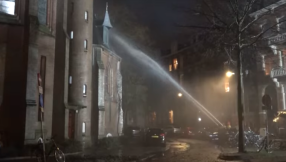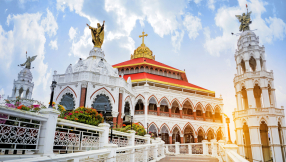Brave new church
Around a hundred Christians engaged in fresh expressions and mission movements across the UK convened at Sheffield Cathedral on Thursday in an attempt to break some new ground on this issue.
As communities that were pioneered a decade or so ago begin to dig deeper roots and others spring to life in their wake, it’s an increasingly pressing question. In fact, the Bishop of Sheffield, the Rt Rev Dr Steven Croft, sees it as one of the most important in the coming years.
In his opening address to the New Monasticism conference, he said: “The principal challenge for the Church of England in the next 10 years is helping structures of the institutional church relate to the new mission structures that are emerging, and to help these mission structures relate to the Church of England.”
In light of the changing face of church, two terms are re-emerging - “modality” and “sodality”. They were coined by missiologist Ralph Winter, the former referring to groups of Christians forming a diffused movement and the latter, a group based around a defined purpose.
They may sound odd but Bishop Croft believes they are “very, very helpful” for the church as it seeks to understand the changing landscape.
Beth Keith has spent the last few years researching modal and sodal communities at Church Army’s research centre in Sheffield.
Although fresh expressions have undoubtedly opened up new avenues for growth in the church, they have not been without their challenges, she has found.
She goes as far as to say that in amongst the reports of success, there have been some “strikingly negative stories”; stories of strain, stories of resistance, stories that point to a church “struggling to do it well”.
Her research looked at modally placed pioneers – fresh expressions developed within existing church structures; sodally placed pioneers – those forming a community outside of the existing church structure and connecting to a sodal organisation; and pioneers in a mixed context – those who may be supported in some way by a sodal organisation but who work within an existing church structure.
Out of the three, she has found that those most positive about their pioneering experiences were the sodal pioneers.
Modal pioneers were more likely to become “despondent” after time and find themselves “locked in antagonism” with the church that they had sought to achieve discontinuity from.
Sometimes the greatest challenge was convincing the existing congregation of their pioneering vision.
By contrast, sodal communities enjoyed more freedom and were “released to work with those beyond the fringe of the church”.
Chris Neal, of Church Mission Society, admits that finding the right language to discuss the future of the British church is in itself a challenge. Indeed, words can unhelpfully “dichotomise” the church, he said.
Bishop Croft said it may be the case that the church has to develop new language. Neal added that there was a need to find a language that would “allow deeper unity” among the variations of church.
“If we are not careful, the new monasticism will become the new romanticism,” he said. “[It’s about] how to encourage each other to stay focused on the calling.”
Ian Mobsby, a founding member of Moot, appreciates the sentiment.
“I see modal and sodal as a place of vocation and not who’s right and who’s wrong,” he said.
Moot is a new monastic community that was recently established in the heart of London’s financial district. Its aim is to reach not only the dechurched but the entirely unchurched - the spiritual seekers who are searching for something but turned off by conventional religion.
The free meditation sessions have proved a real draw, but Mobsby admits he could not believe it when around 35 completely unchurched people turned up for this year’s Lent course.
The initiatives they offer vary, but the purpose is the same – to show “generous love” to people beyond the reach of the traditional church, to “recover a sense of what it means to be brother and sister”, and to answer the radical call to live out faith “rather than talk about it”.
That means that people don’t need to be Christian to join the community, but the hope is of course that they will become believers along the way.
Mobsby explains that, unlike the traditional church model, which takes on a sort of “God’s representative on earth” role, new monasticism is about “getting out of the way of God”.
“It allows people to belong who don’t necessarily believe. If people do not know who they are - which many in this country do not - how will they ever know they have a need for God? ” he said.
“There is something about the church laying out generous places of hospitality where people can belong to break down the negative stereotypes of the faith and the church, to then experience Christianity in life and practice, to then question and explore God for themselves. I think this model is very good for that.”
There are certain settings where new monastic communities appear to be enjoying particular success, namely materially and spiritually impoverished areas, and also among young people.
They are “not a panacea to everyone’s problems”, Mobsby hastens to add, but they do offer lots of new opportunities to draw desperately seeking people into the Christian fold.
In addition to prayer and a good idea, the pioneering process is helping along by a dose of good old fashioned courage.
To be a pioneer of new monasticism or another form of fresh expression, you need “bravery”, Mobsby concludes.
“The bravery of going to a place where it’s hard, where there’s no money, no pension plan, and no idea of how this is going to work out.”













